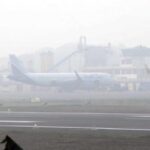African airlines are going through turbulent times. Of the three market leaders in the past decade; Ethiopian, Kenyan and South African, Ethiopian is the biggest airline with over 100 aircraft and while government-owned, has traditionally been left to manage its own affairs. Partial privatisation is due shortly. Ethiopian suffered from the tragic and infamous crash of its 737 MAX aircraft in March this year and its hub in the capital Addis Ababa, potentially a rival to the Gulf centres, is too small and very, very tired. Kenya Airways suffered a £58m loss in the last financial year and is due to be re-nationalised shortly.
So what of South African Airways? It has just received its first A350-900 and is due to acquire another three by the end of the year. These will be used on the ultra-long-haul routes to the USA, starting with New York and probably including Washington DC shortly. The new aircraft will replace the aging A340-600. SAA hopes to save 20-25% on fuel costs and offer a much-improved passenger experience. Is it enough?

Image: Sibusiso Nxumalo @FlyingZulu
Not by a long way.
Geographically, South Africa is a terminus. It can-and does-serve as a hub for tourism, family and business travel via Johannesburg to Botswana, Namibia and Zimbabwe, but it’s a ten-hour flight from European centres and the far East, and longer still from North America. Travelling on to those smaller southern African countries requires a degree of backtracking. Even so, the geographical situation of New Zealand is similar and ANZ is performing well, even while dominated by its bigger neighbour QANTAS.
Most issues are self-inflicted. Route management is chaotic. The airline owns low cost carrier Mango, the regional and domestic carrier SA Express and has close ties to SA Airlink. As a result several SAA routes have been duplicated although the airline has withdrawn from the smaller domestic routes and now serves only the two high-density sectors to Cape Town and Durban largely for the business traveller. Long haul routes are dominated by European carriers, and by cheaper alternatives to the rest of the world via the Gulf. For example, United is shortly introducing a direct service from New York to Cape Town.

Image: Gianluigi Guerica/AFP
SAA Technical isn’t helping either. Most recently, a lack of proper oversight at the subsidiary SAA Technical caused the grounding of several SAA, Mango and Kulula flights. (Kulula is the LCC subsidiary of BA franchise Comair)
SAA is government-owned and has needed large handouts in the last decade to remain in operation; it last made a profit in 2011 and the loss for 2017/18 was R5.7b. (~£300m) SAA loses money at about £26m a month. In the last decade, it’s suffered from a series of politically appointed CEO’s, none of whom have had any appreciable airline experience and all of whom have had a disastrous impact on profitability. The most recent CEO resigned in frustration with government inaction. The South African Minister of Finance has supported partial or full privatisation, but no equity partners have emerged.
The solution lies in political will. Unions recognised by SAA have already declared their opposition to any attempt at privatisation for fear of job losses. Losses seem inevitable, but as the Minister has said, SAA can’t continue in its present circumstances. The new CEO will need to accept the challenge of strategically redirecting the airline in the face of fierce competition, an owner politically reluctant to defy the unions and a public who increasingly can (and are) deserting the national carrier.








